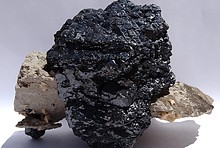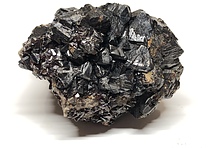Home PageAbout MindatThe Mindat ManualHistory of MindatCopyright StatusWho We AreContact UsAdvertise on Mindat
Donate to MindatCorporate SponsorshipSponsor a PageSponsored PagesMindat AdvertisersAdvertise on Mindat
Learning CenterWhat is a mineral?The most common minerals on earthInformation for EducatorsMindat ArticlesThe ElementsThe Rock H. Currier Digital LibraryGeologic Time
Minerals by PropertiesMinerals by ChemistryAdvanced Locality SearchRandom MineralRandom LocalitySearch by minIDLocalities Near MeSearch ArticlesSearch GlossaryMore Search Options
The Mindat ManualAdd a New PhotoRate PhotosLocality Edit ReportCoordinate Completion ReportAdd Glossary Item
Mining CompaniesStatisticsUsersMineral MuseumsClubs & OrganizationsMineral Shows & EventsThe Mindat DirectoryDevice SettingsThe Mineral Quiz
Photo SearchPhoto GalleriesSearch by ColorNew Photos TodayNew Photos YesterdayMembers' Photo GalleriesPast Photo of the Day GalleryPhotography
╳Discussions
💬 Home🔎 Search📅 LatestGroups
EducationOpen discussion area.Fakes & FraudsOpen discussion area.Field CollectingOpen discussion area.FossilsOpen discussion area.Gems and GemologyOpen discussion area.GeneralOpen discussion area.How to ContributeOpen discussion area.Identity HelpOpen discussion area.Improving Mindat.orgOpen discussion area.LocalitiesOpen discussion area.Lost and Stolen SpecimensOpen discussion area.MarketplaceOpen discussion area.MeteoritesOpen discussion area.Mindat ProductsOpen discussion area.Mineral ExchangesOpen discussion area.Mineral PhotographyOpen discussion area.Mineral ShowsOpen discussion area.Mineralogical ClassificationOpen discussion area.Mineralogy CourseOpen discussion area.MineralsOpen discussion area.Minerals and MuseumsOpen discussion area.PhotosOpen discussion area.Techniques for CollectorsOpen discussion area.The Rock H. Currier Digital LibraryOpen discussion area.UV MineralsOpen discussion area.Recent Images in Discussions
Identity HelpFound in Webster, TX, USA

2nd Jun 2015 02:53 UTCSherlene Mats
I have long felt that it may have been brought to our area by someone many years ago and somehow it ended up buried where it was found.
Any ideas as to what it is and where it might be from would be appreciated.

2nd Jun 2015 03:37 UTCBill Cordua 🌟 Manager

2nd Jun 2015 03:47 UTCSherlene Mats
I will give the tests a try and get back to you.
I really appreciate the reply!
2nd Jun 2015 03:58 UTCDana Slaughter 🌟 Expert

2nd Jun 2015 04:47 UTCSherlene Mats
Tomorrow, I will try to get around to doing the suggested tests and post the results.
Thanks, again!

2nd Jun 2015 05:28 UTCHarold (Hal) Prior Expert

2nd Jun 2015 06:05 UTCSherlene Mats
I agree, I have never found an indigenous rock in this area. I feel that a family had placed it in a flowerbed or the likes many years ago. It was the only solid object and not buried very deep.
Of course, you know there is no Clear Lake City anymore. It took a longtime to get use to that fact, but now it sounds strange to hear some use that. It, as I'm sure you know, is referred to as the Clear Lake area. It has lost much of it charm, sad to say.
We don't see many astronauts around, anymore. My son in law has worked at NASA for many years, and he see them at times.
I am 6th generation Texan and was a real tom-girl. Yet, I have never seen a coral snake (plenty of the others you mention). I know they are here, just never see them.
I grew up in Alvin and we knew a Prior family. Did you have family there?
Yes, many Native American artifacts have been unearth. Texas has a rich history in that regard.
Will try the suggested test, ASAP, and let you know if it fizzes. I wouldn't image gypsum would fizz. Any way to test for that?
Well, enjoyed visiting with you, Hal. Have a good night. Will check back mañana.
2nd Jun 2015 09:02 UTCDavid Von Bargen Manager
2nd Jun 2015 12:58 UTCPaul Brandes 🌟 Manager
I would agree with Hal in that it's probably not from the Webster area, but was brought in either naturally or by "post-glacial hominid activity". As far as testing, the tips given already should point you in the right direction. I'm thinking gypsum as well.
Yes, it has been wet here lately. We're on the NW side and have faired much better than the folks in and around downtown Houston. If you are interested in rocks/minerals and the like, I would highly recommend taking a look at the Houston Gem & Mineral Society and visiting one of their monthly meetings, as well as the many dedicated sections they have. Another fine group of mineral people are the Clear Lake Gem & Mineral Society based out of Seabrook.

2nd Jun 2015 15:57 UTCHarold (Hal) Prior Expert
The only family I have in CL area is a son and family that live in CL (step grand children go to Clear Brook high). Worked at JSC from 1968 thru 1998, my son Tom currently is at NASA with hypervelocity lab. I recall well the day we were "Occupied" by Houston in a tax grab as they came in with sirens and flashing red lights. My neighbor turned hose on the police cars!
Coral snakes are not obvious as they stay under dead wood, mulch, etc., my son and his friend would build traps by piling up dead wood and mulch for them to crawl under. They once caught a 7 foot bull snake on UHCL campus and had to release it as it was to strong for them to handle. We went back later and found it and was able to get a measurement by marking head and tail spot on ground. I was pleased when they gave up snake hunting when a two of them were bitten by a copperhead. They caught a big Rattlesnake near Texas city and had a friend's mother cook it an they ate the whole snake. Snake is not on my diet!!
In '68 the CL area was pretty primitive with coyotes howling along Bay area blvd.at night, and alligators devouring the pet population of Brook Forest.
I was one of the founders of the Clear Lake G&M and was a dealer in the CL and Houston shows for many years. Take your rock to the Houston G&M show they will be able to identify for you. It looks like Austin area gypsum - I'm even guilty of transporting some back to the CL area many years ago.

3rd Jun 2015 05:38 UTCSherlene Mats
When you say "scratch" do you mean it flakes off?

3rd Jun 2015 05:41 UTCSherlene Mats

3rd Jun 2015 05:41 UTCSherlene Mats

3rd Jun 2015 06:03 UTCSherlene Mats
I sure have enjoyed your reminiscing. CL was and is a special place. When I was younger it was were you went.
Fortunately, those boys learned a painful but not a deadly lesson! That mom who cooked the rattler must have been quite a gal! I'd taste snake, given the chance. Wow, would love to have seen that bull snake! I had an aunt that got bit by a cottonmouth. Her whole leg turned black.
How exciting to have helped found an organization. If I ever get to take the rock to Houston G & M can I drop your name?

3rd Jun 2015 06:23 UTCSherlene Mats
Thanks to all responders. This has been so much fun!

3rd Jun 2015 07:23 UTCJohn Oostenryk
Have fun with your looking around- both here and in your locale!
~JO:)

7th Jun 2015 17:52 UTCHarold (Hal) Prior Expert
I would agree with John that it is probably fibrous gypsum from probably central or west Texas. You can use my name at Houston G & M a few of the older members will remember me. I have been gone from Texas for 16 years thus many have moved on. Some of my collection will be featured in the July-August midwest supplement to the Mineralogical Record as an Iowa collector. My son and family will be in Iowa in two weeks for a visit, they still live in CL, we will be reliving CL memories. My son has lived his entire life in CL, except for 5 years at UT. Still waiting for our first 90 degree day in Iowa! .......Hal P

7th Jun 2015 23:52 UTCDoug Daniels




Mindat.org is an outreach project of the Hudson Institute of Mineralogy, a 501(c)(3) not-for-profit organization.
Copyright © mindat.org and the Hudson Institute of Mineralogy 1993-2024, except where stated. Most political location boundaries are © OpenStreetMap contributors. Mindat.org relies on the contributions of thousands of members and supporters. Founded in 2000 by Jolyon Ralph.
Privacy Policy - Terms & Conditions - Contact Us / DMCA issues - Report a bug/vulnerability Current server date and time: May 13, 2024 19:58:09
Copyright © mindat.org and the Hudson Institute of Mineralogy 1993-2024, except where stated. Most political location boundaries are © OpenStreetMap contributors. Mindat.org relies on the contributions of thousands of members and supporters. Founded in 2000 by Jolyon Ralph.
Privacy Policy - Terms & Conditions - Contact Us / DMCA issues - Report a bug/vulnerability Current server date and time: May 13, 2024 19:58:09











